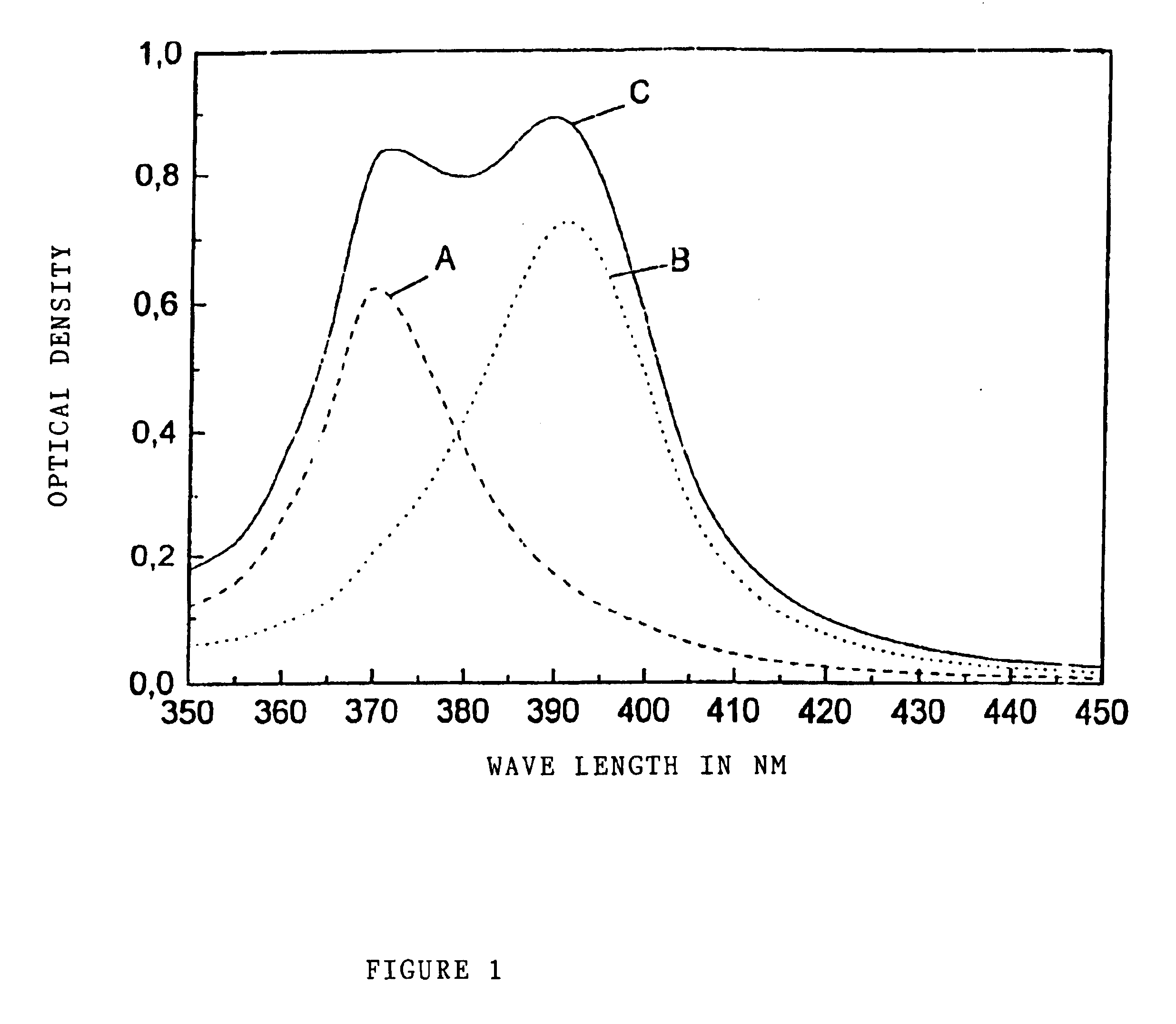Method for producing UV polarizers
a technology of polarizers and polarizers, which is applied in the direction of glass tempering apparatus, glass making apparatus, instruments, etc., can solve the problems of poor mechanical durability, ineffective use of visible light, and sensitivity to ultraviolet ligh
- Summary
- Abstract
- Description
- Claims
- Application Information
AI Technical Summary
Problems solved by technology
Method used
Image
Examples
Embodiment Construction
standard float glass is brought into contact with a AgNO.sub.3 / NaNO.sub.3 salt melt, at 350.degree. C. over 30 minutes. Subsequently, a two-hour tempering step takes place in a hydrogen gas atmosphere at 600.degree. C., followed by a second two-hour tempering at 600.degree. C., in air.
In a second ion exchange process over 30 minutes at 350.degree. C. in the AgNO.sub.3 / NaNO.sub.3 salt melt together with a two-hour tempering step in a hydrogen gas atmosphere at temperatures not exceeding 600.degree. C., small silver particles form inside the glass. In the following step, at a temperature of 600.degree. C., the glass is subjected to a tensile force to undergo a deformation with a stretch ratio of 4. The deformation achieved in this way creates an absorption band similar to that shown as band C in FIG. 1.
3.sup.rd Execution Example
A standard float glass is brought into contact with a AgNO.sub.3 / NaNO.sub.3 salt melt, at 350.degree. C. over 30 minutes. Subsequently, a two-hour tempering...
PUM
| Property | Measurement | Unit |
|---|---|---|
| Angle | aaaaa | aaaaa |
| Angle | aaaaa | aaaaa |
| Size distribution | aaaaa | aaaaa |
Abstract
Description
Claims
Application Information
 Login to View More
Login to View More - R&D
- Intellectual Property
- Life Sciences
- Materials
- Tech Scout
- Unparalleled Data Quality
- Higher Quality Content
- 60% Fewer Hallucinations
Browse by: Latest US Patents, China's latest patents, Technical Efficacy Thesaurus, Application Domain, Technology Topic, Popular Technical Reports.
© 2025 PatSnap. All rights reserved.Legal|Privacy policy|Modern Slavery Act Transparency Statement|Sitemap|About US| Contact US: help@patsnap.com

